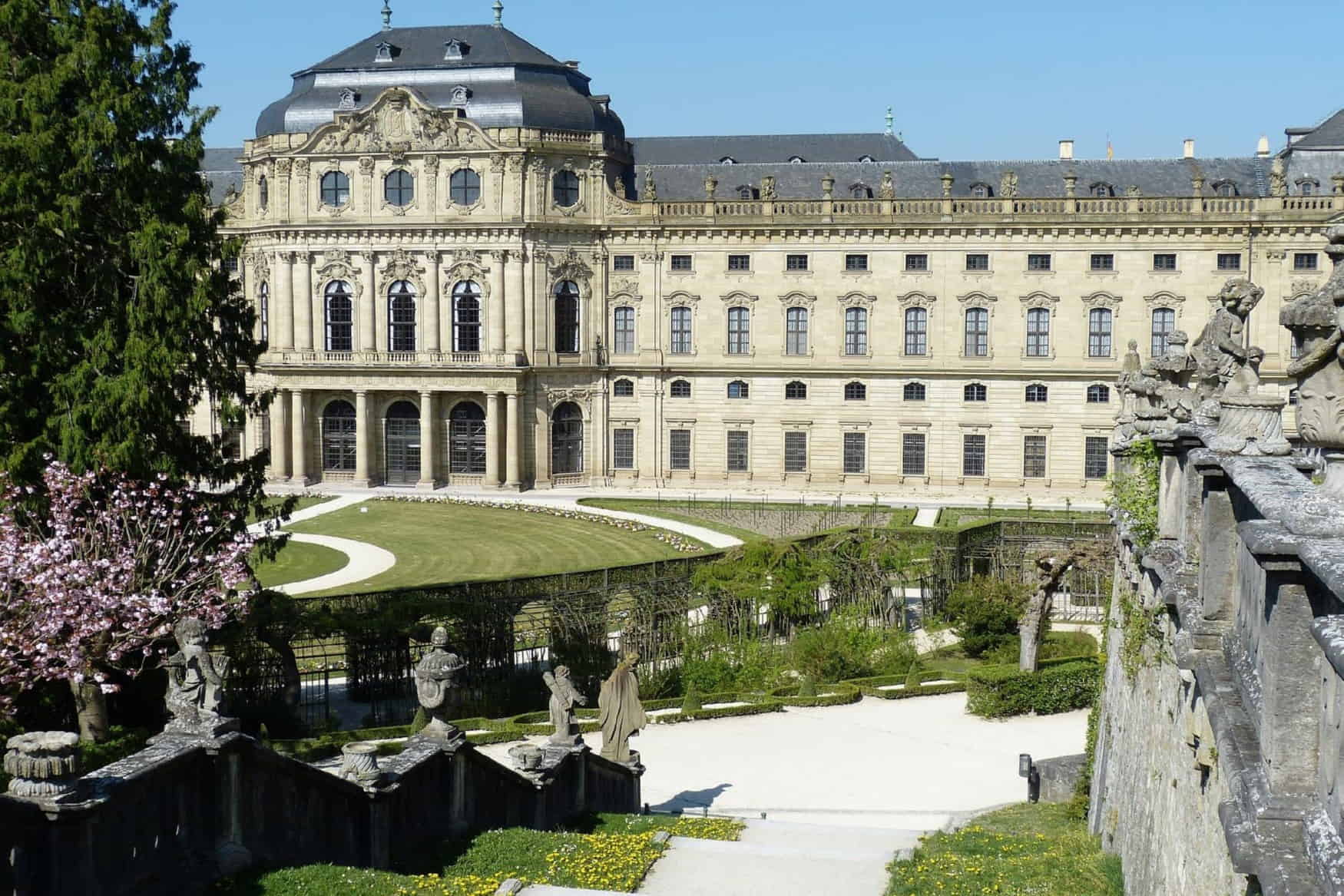The Würzburg Residenz, a masterpiece of Baroque architecture, stands as one of Europe's most magnificent palaces. Located in the heart of Würzburg, Bavaria, this UNESCO World Heritage Site captivates visitors with its grandeur and artistic splendor. Built between 1720 and 1744, the Residenz showcases the vision of Prince-Bishop Johann Philipp Franz von Schönborn and the architectural genius of Balthasar Neumann. With its stunning frescoes, opulent interiors, and meticulously designed gardens, the Würzburg Residenz offers a journey through time, art, and royal ambition. This architectural marvel invites families to explore centuries of history and creativity, promising an unforgettable experience for visitors of all ages.
Highlights
- World's largest ceiling fresco by Giovanni Battista Tiepolo
- Grand Staircase with unsupported vaulted ceiling
- Imperial Hall (Kaisersaal) with ornate decorations and frescoes
Contents
 Photo: pixabay.com
Photo: pixabay.com
Here is Why Your Kids Will Find it Interesting
Würzburg Residenz is worth visiting with kids aged 8 and up, as it offers a fascinating glimpse into royal life and Baroque artistry. Children will be captivated by the grand rooms, secret passages, and the chance to imagine themselves as princes and princesses. The palace's interactive exhibits and family-friendly tours make history come alive, engaging young minds with stories of the past. Kids can also enjoy exploring the beautiful Court Gardens, where they can run freely and discover hidden statues and fountains.
Family-friendly features
- Interactive audio guides designed for children
- Family-oriented guided tours with engaging storytelling
- Spacious Court Gardens for outdoor activities and picnics
History and Construction
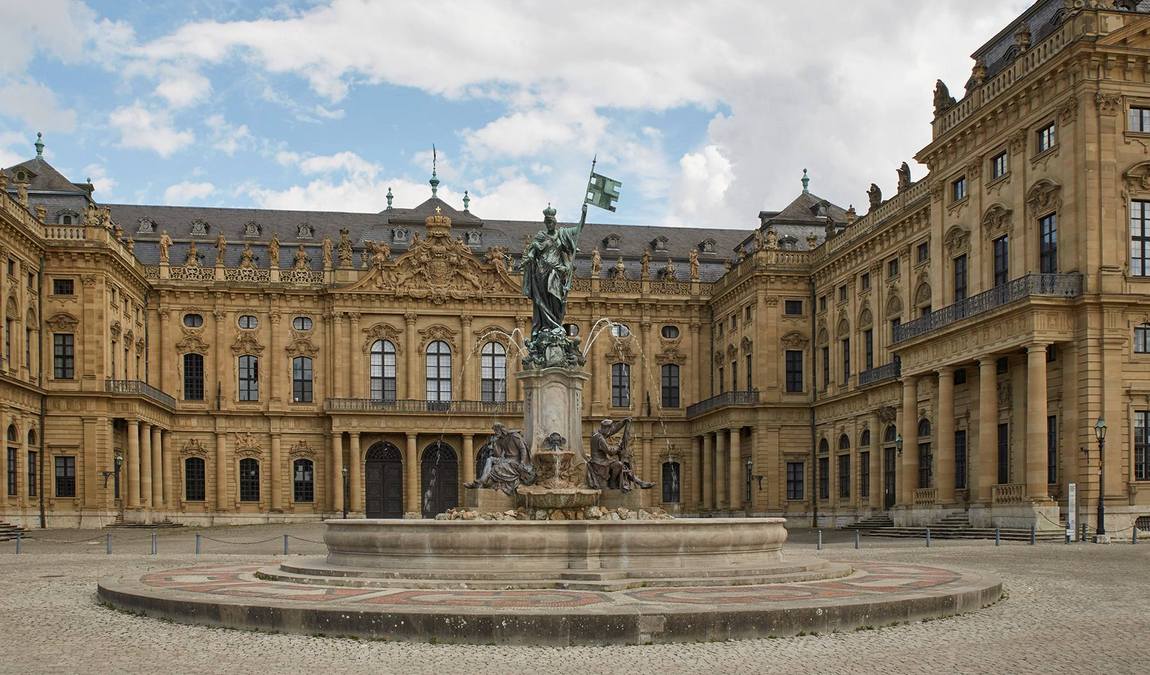 Photo: facebook.com/bayerische.schloesserverwaltung
Photo: facebook.com/bayerische.schloesserverwaltung
The Würzburg Residenz was commissioned by Prince-Bishop Johann Philipp Franz von Schönborn in 1720 — the ambitious project aimed to create a palace rivaling Versailles's grandeur. Construction spanned from 1720 to 1744, with the interiors completed by 1780. The principal architect, Balthasar Neumann, worked alongside a team of talented artists and craftsmen to bring the vision to life.
Key figures involved in the construction included Johann Lukas von Hildebrandt, Maximilian von Welsch, Robert de Cotte, and Germain Boffrand.
The Schönborn dynasty, particularly Johann Philipp Franz and his brother Friedrich Karl von Schönborn, played crucial roles in overseeing the project and ensuring its grandeur.
Architectural Highlights
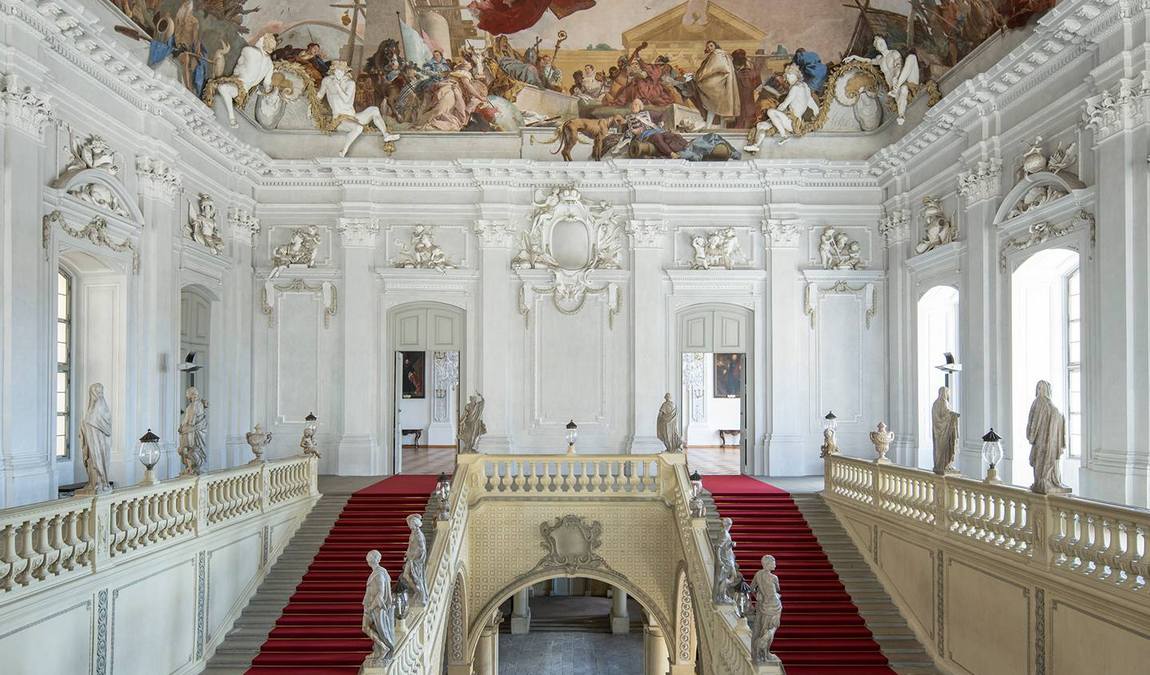 Photo: facebook.com/bayerische.schloesserverwaltung
Photo: facebook.com/bayerische.schloesserverwaltung
The Würzburg Residenz exemplifies the Baroque and Rococo styles, showcasing a harmonious blend of French château architecture, Viennese Baroque, and northern Italian architecture. Notable features include:
- Grand Staircase: Featuring Tiepolo's magnificent ceiling fresco "Apollo and the Four Continents"
- Imperial Hall (Kaisersaal): Adorned with frescoes depicting Franconian history
- White Hall: An elegant audience chamber with stunning stucco work
- Court Chapel (Hofkirche): Richly designed by Neumann with altars painted by Tiepolo
The palace's symmetrical design and yellow sandstone exterior create an impressive facade, while the interior spaces showcase the pinnacle of 18th-century craftsmanship and artistry.
Artistic Treasures
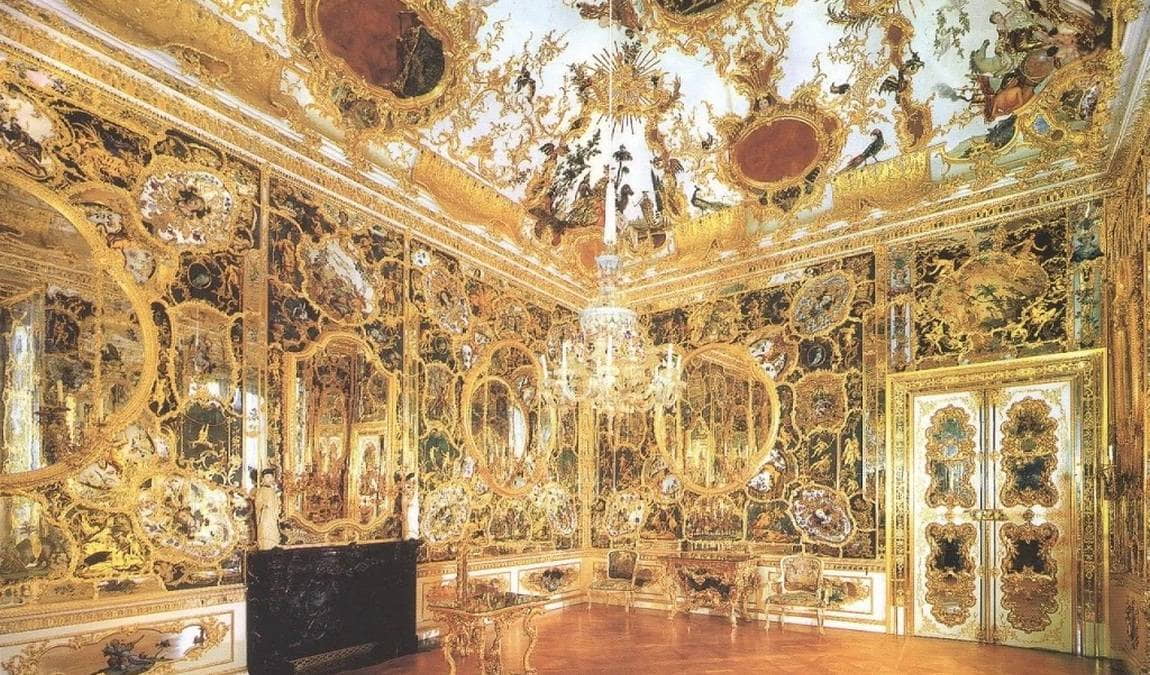 Photo: residenz-wuerzburg.de
Photo: residenz-wuerzburg.de
The Würzburg Residenz houses an array of artistic masterpieces:
- Giovanni Battista Tiepolo's frescoes, Including the world's largest ceiling fresco in the Grand Staircase
- Stucco work by Antonio Bossi: Intricate decorations adorning walls and ceilings
- Venetian Room: Featuring scenes of Venice painted by Tiepolo
- Mirror Cabinet: A dazzling room with reverse glass paintings and mirrors
The palace also contains the Staatsgalerie, showcasing paintings from the 14th to 19th centuries, and numerous rooms filled with period furniture, tapestries, and decorative arts.
Court Gardens and Residence Square
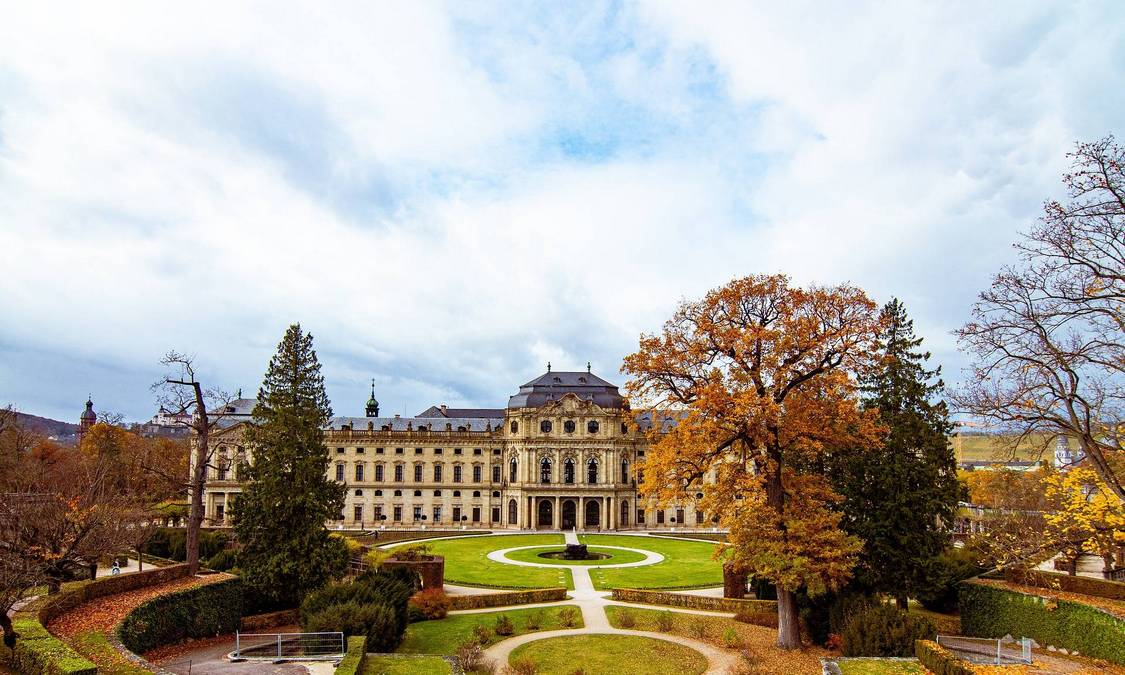 Photo: pixabay.com
Photo: pixabay.com
The Court Gardens of the Würzburg Residenz, a masterpiece designed by Johann Prokop Mayer, perfectly complement the palace's grandeur. These gardens showcase French-inspired formal landscaping, featuring a symmetrical layout with intricate geometric patterns. Visitors strolling through the grounds are treated to a visual feast of ornamental flowerbeds and meticulously pruned trees, creating a harmonious blend of nature and artistry. Dotting the landscape, statues, and fountains adds a layer of visual interest, inviting guests to pause and admire their beauty.
At a distance of 2.3 kilometres is Marienberg Fortress, which we also highly recommend to visit with the whole family.
In front of this magnificent palace lies the Residence Square (Residenzplatz), which is a grand entrance and vibrant public space in front of this magnificent palace. This expansive area provides a breathtaking view of the Residenz's facade and is a hub for various events and gatherings. The square's open layout allows visitors to fully appreciate the scale and architectural details of the palace while offering a perfect spot for families to gather, relax, and soak in the atmosphere of this historic site. Whether hosting cultural festivals or simply providing a meeting place for locals and tourists alike, the Residenzplatz is crucial in connecting the palace to the wider city of Würzburg.
World War II Damage and Restoration
 Photo: facebook.com/bayerische.schloesserverwaltung
Photo: facebook.com/bayerische.schloesserverwaltung
The Würzburg Residenz suffered significant damage during World War II:
- March 16, 1945: Allied bombing destroyed much of the city and damaged the palace
- The roof and floors of many rooms collapsed, but the vaulted ceilings survived
- Furnishings and artwork had been removed for safekeeping before the bombing
Post-war reconstruction efforts began immediately:
- 1945-1987: Extensive restoration work to rebuild and recreate damaged areas
- Careful recreation of lost elements using historical documentation
- 1987: Reopening of the fully restored Mirror Cabinet
Today, the Würzburg Residenz is a testament to its original splendor and the dedication to its preservation.
Best Time to Visit
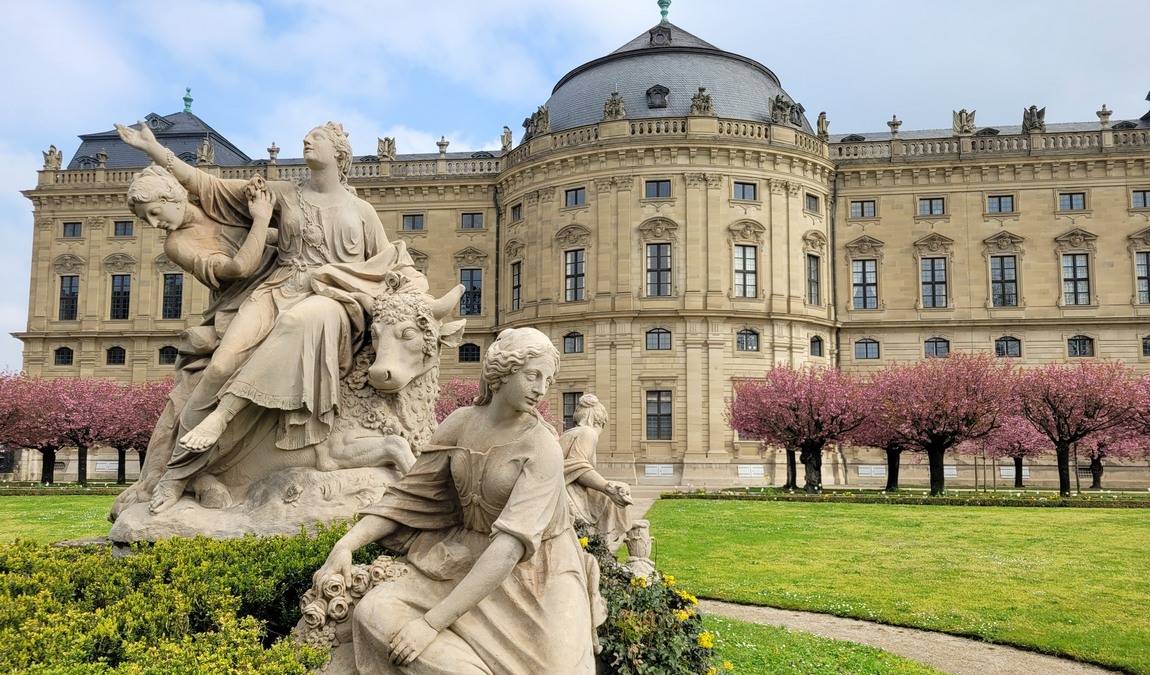 Photo: facebook.com/bayerische.schloesserverwaltung
Photo: facebook.com/bayerische.schloesserverwaltung
The best time to visit Würzburg Residenz with children is during the spring or early autumn when the weather is mild and the gardens bloom. Weekday mornings tend to be less crowded, offering a more relaxed experience for families. The palace is open year-round, with extended hours from April to October.
Recommended Duration: A typical visit lasts about 2-3 hours, including time to explore the palace interiors and gardens.
Our Recap
The Würzburg Residenz offers families a unique opportunity to step back in time and experience the grandeur of a Baroque palace. Its stunning architecture, world-class art, and beautiful gardens provide an educational and awe-inspiring visit for all ages. The palace's family-friendly features and rich history make it a must-see destination for those exploring Bavaria with children.




